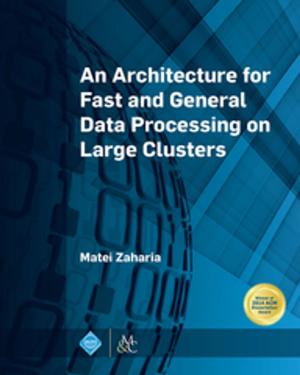Sonic Thunder
A Discussion of Natural and Artificial Shock Waves
Nonfiction, Science & Nature, Science, Physics, Dynamics, Earth Sciences, Geophysics, Mathematical Physics| Author: | W R Matson | ISBN: | 9781681749655 |
| Publisher: | Morgan & Claypool Publishers | Publication: | December 11, 2018 |
| Imprint: | IOP Concise Physics | Language: | English |
| Author: | W R Matson |
| ISBN: | 9781681749655 |
| Publisher: | Morgan & Claypool Publishers |
| Publication: | December 11, 2018 |
| Imprint: | IOP Concise Physics |
| Language: | English |
Since the earliest days of human existence, the clash of thunder and trembling of the hills has struck fear into the hearts of seasoned warriors and tribal villagers alike. Great gods, demi-gods, and heroes were created to explain the awesome, mysterious, and incomprehensibly powerful forces of Nature in a feeble attempt to make sense of the world around them. To our advanced scientific minds today, these explanations seem childish and ridiculous; however, the power to flatten thousands of square miles of ancient forest, create massive holes in the Earth itself, and cause mountains to tremble to their very roots are more than enough reason to believe. Indeed, perhaps our scientific advancement has caused us to not fully or completely appreciate the awesome scale and power that Nature can wield against us.
The study of shock wave formation and dynamics begins with a study of waves themselves. Simple harmonic motion is used to analyze the physical mechanisms of wave generation and propagation, and the principle of superposition is used to mathematically generate constructive and destructive interference. Further development leads to the shock singularity where a single wave of immense magnitude propagates and decays through various media. Correlations with the fields of thermodynamics, meteorology, crater formation, and acoustics are made, as well as a few special applications. Direct correlation is made to events in Arizona, Siberia, and others.
The mathematical requirement for this text includes trigonometry, differential equations, and large series summations, which should be accessible to most beginning and advanced university students. This text should serve well as supplementary material in a course covering discrete wave dynamics, applied thermodynamics, or extreme acoustics.
Since the earliest days of human existence, the clash of thunder and trembling of the hills has struck fear into the hearts of seasoned warriors and tribal villagers alike. Great gods, demi-gods, and heroes were created to explain the awesome, mysterious, and incomprehensibly powerful forces of Nature in a feeble attempt to make sense of the world around them. To our advanced scientific minds today, these explanations seem childish and ridiculous; however, the power to flatten thousands of square miles of ancient forest, create massive holes in the Earth itself, and cause mountains to tremble to their very roots are more than enough reason to believe. Indeed, perhaps our scientific advancement has caused us to not fully or completely appreciate the awesome scale and power that Nature can wield against us.
The study of shock wave formation and dynamics begins with a study of waves themselves. Simple harmonic motion is used to analyze the physical mechanisms of wave generation and propagation, and the principle of superposition is used to mathematically generate constructive and destructive interference. Further development leads to the shock singularity where a single wave of immense magnitude propagates and decays through various media. Correlations with the fields of thermodynamics, meteorology, crater formation, and acoustics are made, as well as a few special applications. Direct correlation is made to events in Arizona, Siberia, and others.
The mathematical requirement for this text includes trigonometry, differential equations, and large series summations, which should be accessible to most beginning and advanced university students. This text should serve well as supplementary material in a course covering discrete wave dynamics, applied thermodynamics, or extreme acoustics.















